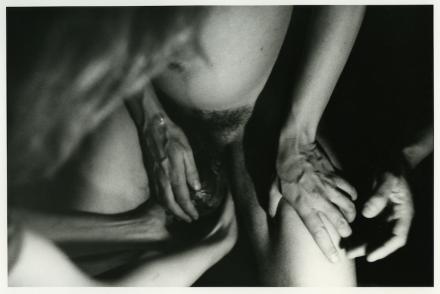Home birth

Two of my three children was born at home and I also had the privilege of being part of an intimate and helpful team at other home births.
Besides the simple realization of that giving birth is not a disease, so it does not belong to hospitals, the idea and practice of home birth corresponded also with the knowledge of the importance of a peaceful and undisturbed start for life I could not avoid to be confronted with as a psychotherapist. I also knew from other fields, like the effects of gender inequality or the different forms of patriarchal violence, that in order to be truly helpful to people, it's not enough to treat retroactively the effects, but it's necessary to prevent the causes. And because the causes are to a great extent structural, societal, cultural and political restraints and not (only) ideas in people's head, I early on concluded that in order to bring sustainable help to people it's necessary to become an activist too.
So while enjoying the heartwarming ambience of the home births in my own family and circle of friends I became also active in the Swedish association for promoting home birth "Föda hemma". What we accomplished in those years didn't change so much the situation of the women who gave birth at home as the conditions for all women in Sweden. The number of families welcoming their children at home didn't grow considerably between 1981 when my son Lomi was born at home and 1986 when his sister Tolmi came to us. But in those five years major hospitals in Sweden started to offer homelike conditions for birthing women, legal changes adopted as a consequence of insistent lobbying ensured women's rights to have their word about the conditions of their childbearing and put an end to several painful, unnecessary and in the long run damaging interventions which until then have been practiced routinely on newborn children. (By the way, this was also one of my first political experiences in that creating alternatives outside the established structures can be more efficient in changing those structures than the efforts of changing them from inside.)
Being back in Hungary, already as a grandfather of three grandchildren (from my eldest daughter, born in a hospital in Hungary before I emigrated to Sweden), I had to realize that the same struggle, in even harder conditions than what we had in Sweden, has to be fought here. The witch-hunt of Ágnes Geréb, the midwife who has done most for home birth in Hungary (and, by the way, helped at the home birth of some of my grandchildren too) is an outrageous indication of that. Please watch the documentary Freedom for Birth.
Truthful and positive documentation contributes to the consciousness raising which is necessary to dismiss the misconceptions surrounding home births. A Finnish photographer living in Sweden, Erja Lempinen, has produced unique series of pictures documenting several home births. With the kind permission of her, the mothers, the children and all the others persons involved here I make available a sample of those pictures. One series documents the birth of my youngest daughter Tolmi, the other shows the birth of Johanna. The mothers, the fathers and all the other helpers, including the midwife – we all belonged to the same circle of friends, and Tolmi and Johanna (the former is the 7 months old baby who enthusiastically cheers on the latter's delivery) were close childhood friends.
Both series of pictures are accompanied by a short account of the mothers about their experience. What I can add on my part is that the home births I had the opportunity to be part of were important pivotal moments also of my growing as a responsible man who do not simply tolerate or "helps", but actively contributes to and enhances women's and children's vital experiences. Circumstances impeded that I could exercise fatherhood with my eldest daughter the way I today think it's worthwhile to do. With my son Lomi I caught up arrears in growing into active and responsible fatherhood. The pleasure, a prolonged and heartfelt pleasure, was and still is mine. My youngest daughter Tolmi came when I almost left (see The cancer monologue of Péter Szil). Fortunately I stayed and I could fully experience the very rewarding experience of fatherhood for many more years.





